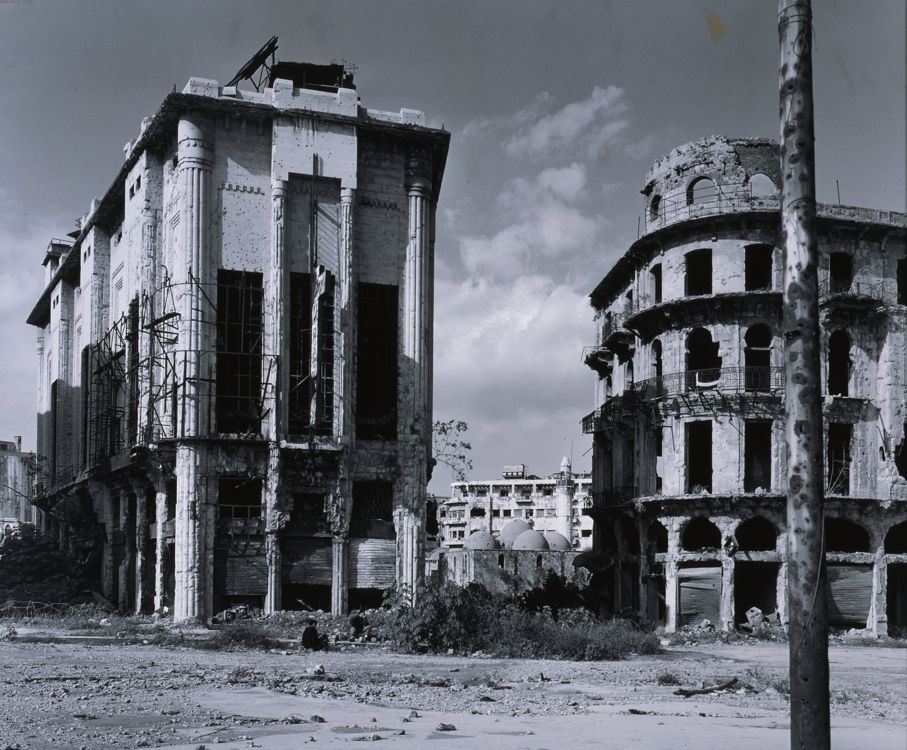Gabriele Basilico
The creator of spare black-and-white photography, almost documentary in feeling, Gabriele Basilico takes the contemporary urban metropolis as his most frequent subject. Strongly influenced by his early training in architecture, Basilico observes the urban landscape with the attention and curiosity of someone seeing it for the first time, searching for the familiar, which, he presents in each of his views without obscuring the specific identity of a particular place. Focusing on areas that are decayed or in transition, but rich in history, in the early 1980s he became known for his series of “factory portraits” of industrial Milan that,using an unusual and experimental language, investigate the social implications of contemporary society.
The works in the Castello belong to a series of photographs Basilico created of the historic city center of Beirut in 1991, soon after the end of a fifteen-year civil war. He had been invited, along with René Burri, Raymond Depardon, Fouad Elkoury, Robert Frank, and Josef Koudelka, by the writer Dominique Eddé, to bear witness to the devastated Lebanese city, which was slowly beginning to rise again. He found the city to be in a state of transition, a place of reconstruction, as well as degradation, where new buildings alternated with destroyed districts and palaces, and where the center, the area most harshly hit by the war, was nearly completely uninhabited. During his lengthy stay in Beirut, as he tried to come familiar with those places, Basilico walked around the old downtown area with a small-format camera, taking a series of photographs that recorded and captured the spirit of what had been reduced to a ghost town. In Basilico’s essentially conceptual images, a sense of melancholy seems to pervade the desolate city views photographed spaces. Although the documentary recording of the war’s destructive force and the pure evidence of the tragic reality predominate, the photographer’s careful attention to the specificities of the places he visits makes Beirut not unlike any other seaside city, such as Naples or Palermo. Beyond their rigorous formal aspect, his photographs manage to convey the true spirit of the city—or every city—something that often escapes the eyes of the distracted visitor. For, as Basilico attests, exploring the visible in order to grasp the invisible is only apparently paradoxical.
[COB]

